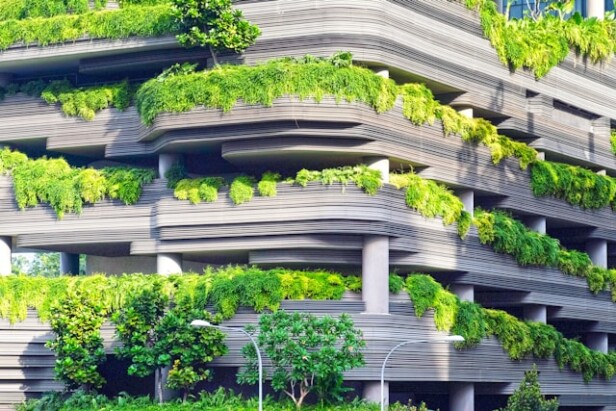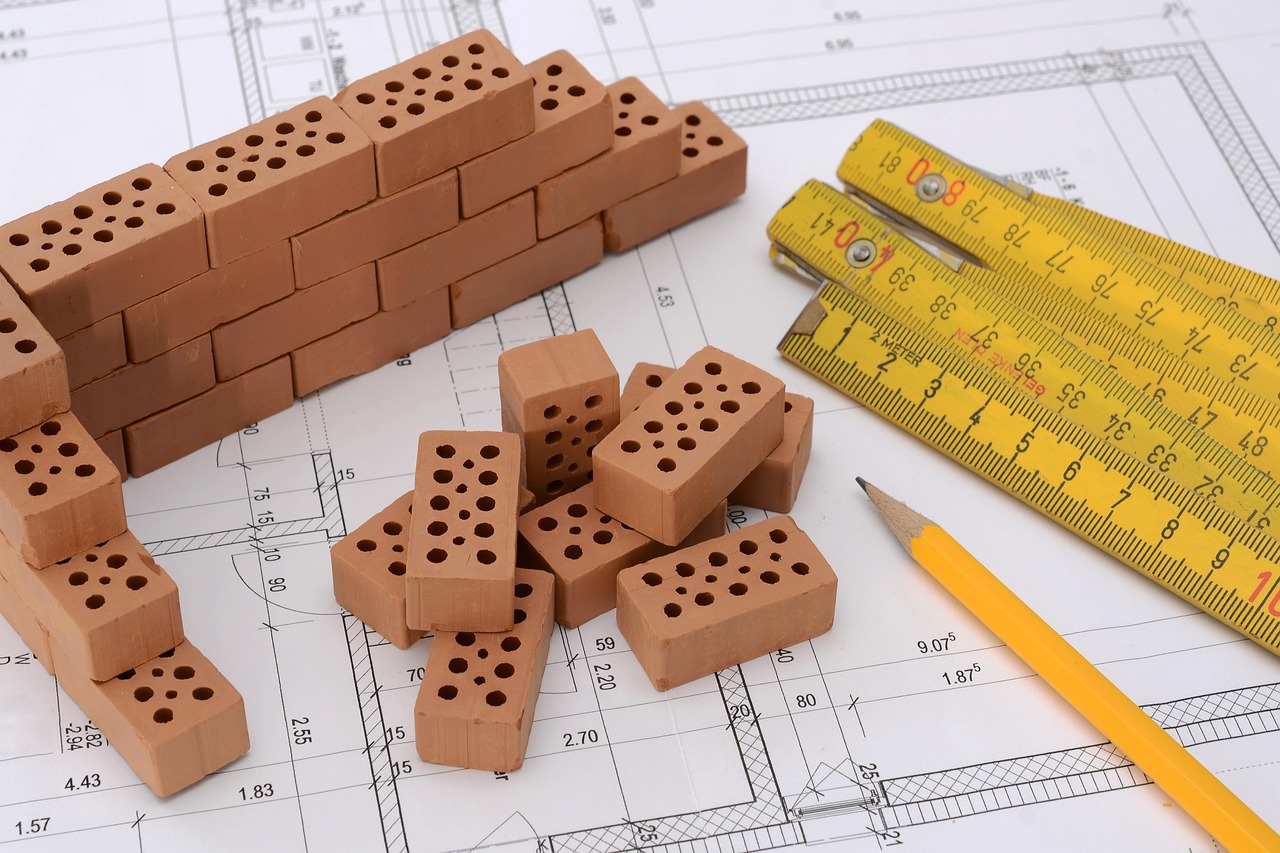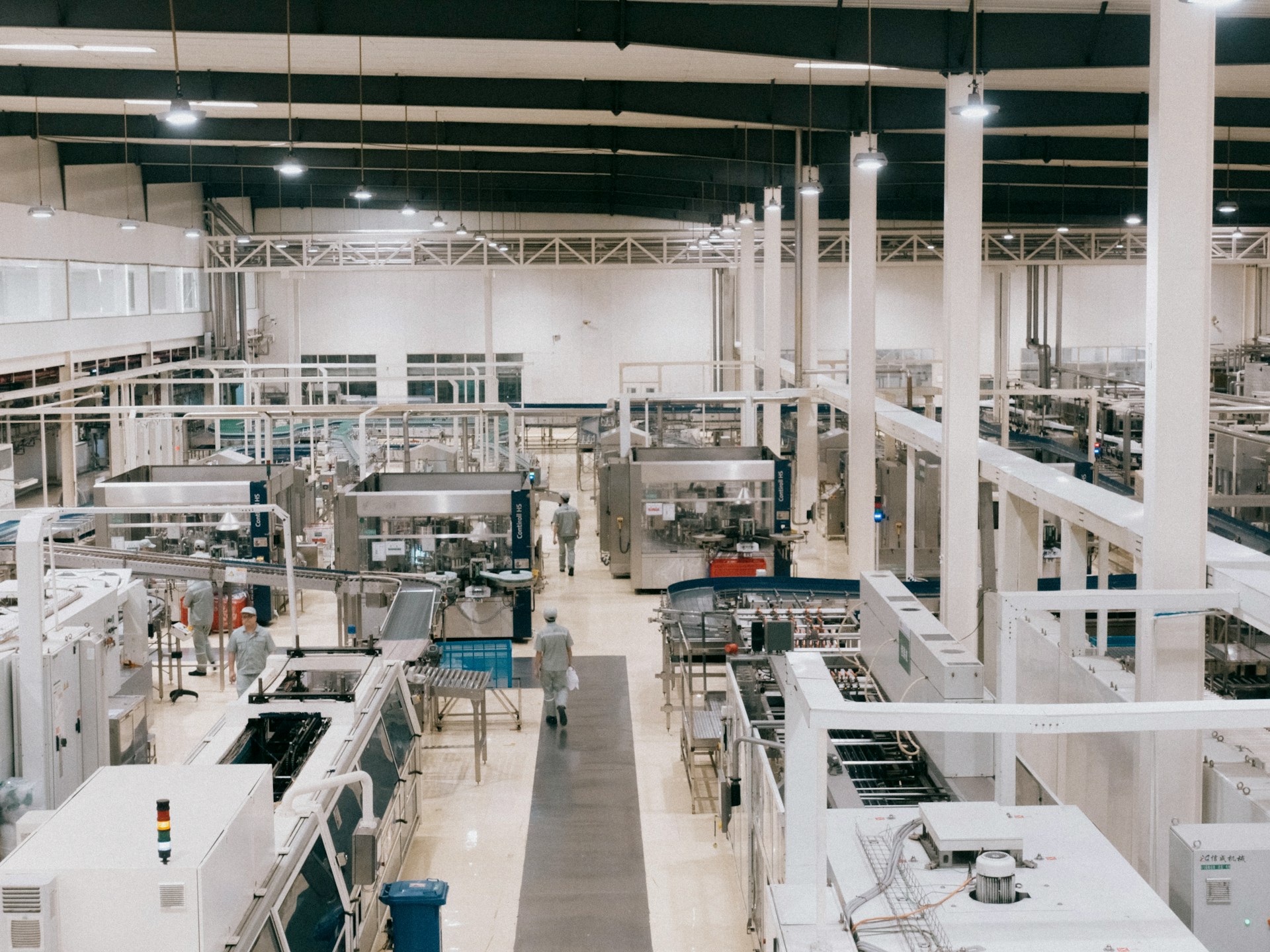The construction sector accounts for approximately 39% of global energy-related carbon dioxide emissions, making material choices critical to climate goals. Green construction materials offer a direct path to reducing this environmental impact while delivering tangible benefits for project owners and occupants.
These environmentally responsible products focus on energy efficiency, resource conservation, and healthier indoor environments. From recycled steel that requires 75% less energy than virgin production to hempcrete that actually absorbs CO2 over time, green materials transform buildings from environmental liabilities into performance assets that support both planetary and human health.
Which Green Construction Materials Are Most Used Today?
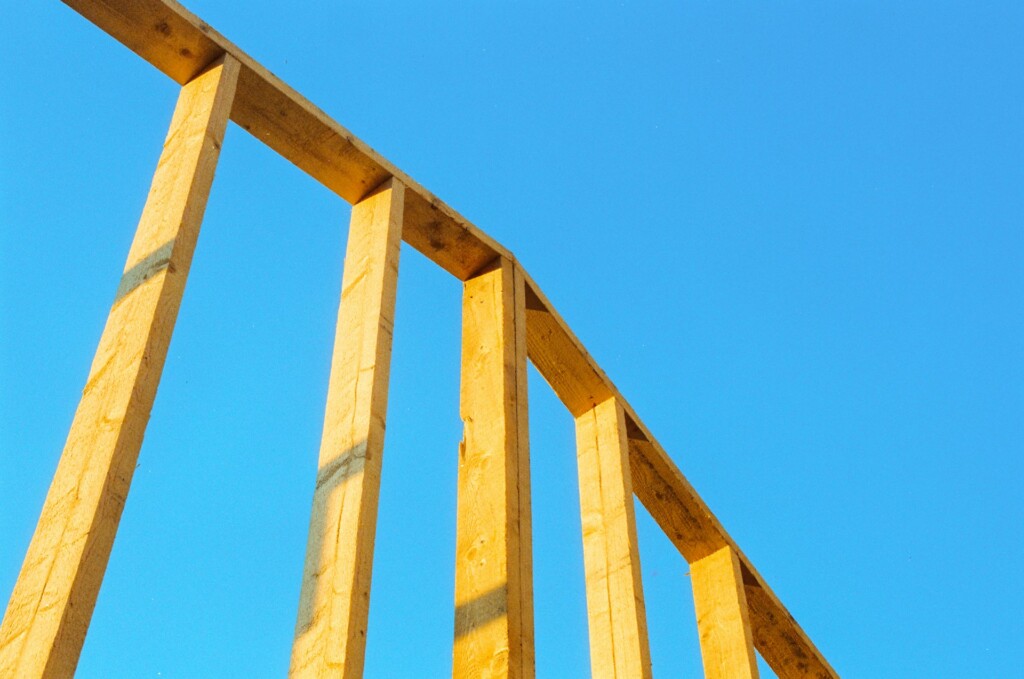
The construction industry has embraced a range of sustainable materials across every building system. We organize these options by application, from structural components to interior finishes, each offering specific environmental and performance advantages.
Structure And Framing Systems
Recycled steel remains a cornerstone of sustainable structural framing. Steel can be recycled indefinitely without losing strength, and using recycled content reduces energy consumption by 75 percent compared to producing new steel. We use recycled steel for beams, columns, and structural frameworks in commercial and industrial projects.
Engineered wood products like cross-laminated timber (CLT) and glulam provide structural strength while sequestering carbon. These products bond multiple wood layers to create materials stronger than conventional lumber. Mass timber construction has enabled buildings over 25 stories tall, demonstrating engineered wood’s structural capabilities.
Bamboo offers rapid renewability for structural applications. This fast-growing grass matures in three to five years, compared to decades for traditional timber. We see bamboo used for framing in residential projects, particularly in regions where local supply chains make it cost-competitive.
Rammed earth construction compresses soil, clay, and sand into durable walls. This ancient technique requires minimal processing and uses locally available materials. Modern rammed earth projects combine traditional methods with contemporary engineering for commercial applications.
Straw bale construction uses agricultural waste to create insulated wall systems. Bales provide excellent thermal performance and can support structural loads when properly designed. We typically see straw bale used in custom residential projects and community buildings.
Insulated concrete forms (ICF) combine concrete strength with continuous insulation. These foam blocks create forms for concrete placement while remaining as permanent insulation. ICF construction offers excellent thermal performance and structural durability for basements, walls, and safe rooms.
Structural insulated panels (SIPs) sandwich foam insulation between oriented strand board faces. SIPs provide structural support and insulation in one system, reducing thermal bridging and construction time. We use SIPs for walls, roofs, and floors in energy-efficient construction.
Masonry And Wall Systems
Earth blocks compress soil and aggregate into brick-like units. These compressed earth blocks offer thermal mass benefits and fire resistance while using minimal processing energy. We source earth blocks locally when soil conditions permit adequate strength.
Aerated concrete combines cement with aluminum powder to create lightweight, insulating blocks. This material provides thermal performance superior to conventional concrete while reducing structural loads. Aerated concrete works well for non-load-bearing walls and insulating applications.
Hempcrete mixes hemp fibers with lime and water to create a carbon-negative insulating material. Hemp plants absorb CO2 during growth, and the lime binder continues sequestering carbon as it cures. We use hempcrete for wall infill in timber-framed construction and insulating applications.
Envelope, Roofing, And Cladding
Reclaimed wood provides character and environmental benefits for exterior cladding and structural elements. Salvaged timber from demolished buildings or industrial structures reduces demand for new forest products. We verify reclaimed wood sources and structural adequacy before specification.
Fiber cement siding combines cement with cellulose fibers to create durable, low-maintenance cladding. This material resists fire, insects, and moisture while requiring less maintenance than wood siding. Fiber cement works particularly well in harsh weather conditions.
Steel roofing offers longevity and recyclability for commercial and residential applications. Metal roofing can last 50 years or more and reflects heat to reduce cooling loads. We specify steel roofing with high recycled content and reflective finishes for energy performance.
Cork cladding harvests bark from cork oak trees without damaging the tree. Cork provides natural insulation and moisture resistance while storing carbon. This renewable material works for both interior and exterior wall applications.
Light-colored roofing materials reflect solar heat to reduce building cooling loads. Cool roofing can significantly decrease urban heat island effects and building energy consumption. We select roofing materials based on solar reflectance values appropriate for the climate zone.
Insulation And Windows
Cellulose insulation recycles newspaper and other paper products into effective thermal insulation. This material provides excellent air sealing and sound control while using recycled content. We blow cellulose into wall cavities and attics for retrofit and new construction projects.
Wool and cotton batts offer natural alternatives to synthetic insulation. Sheep’s wool naturally regulates moisture and provides thermal performance comparable to fiberglass. Cotton insulation from recycled denim provides similar thermal properties with good air sealing characteristics.
Spray polyurethane foam delivers high R-values and air sealing in one application. Plant-based foam formulations reduce dependence on petrochemicals while maintaining insulating performance. We use spray foam for continuous insulation and air barrier applications.
Energy-efficient windows combine multiple glazing layers, low-emissivity coatings, and inert gas fills to limit heat transfer. These windows significantly reduce heating and cooling loads while improving occupant comfort. We specify window performance based on climate zone requirements and building orientation.
Interior Finishes
Low-VOC paints and natural clay plaster reduce indoor air pollutants while providing attractive finishes. These materials avoid formaldehyde and other chemicals that can affect indoor air quality. We specify zero-VOC or low-VOC products for all interior painting applications.
Cork flooring and wall coverings harvest renewable bark material for attractive, durable surfaces. Cork provides natural antimicrobial properties and sound absorption. We use cork in high-traffic areas where durability and comfort matter.
Natural fiber finishes like wool carpeting and cotton wall coverings avoid synthetic chemicals while providing performance benefits. These materials help regulate humidity and provide natural flame resistance. We source certified organic natural fibers when budget permits.
Emerging And Circular Options
Mycelium forms grow fungal root structures around agricultural waste to create insulating and structural materials. This biotechnology produces lightweight, strong materials that biodegrade naturally at end of life. We monitor mycelium products as they move toward commercial availability.
Recycled glass aggregates replace virgin stone in concrete and landscaping applications. Ground glass provides similar performance to natural aggregates while diverting waste from landfills. We specify recycled glass aggregates when local supply chains make them cost-competitive.
Recycled plastic products convert waste streams into durable building materials. Plastic lumber, composite decking, and drainage products extend material lifecycles while reducing landfill waste. We evaluate recycled plastic products for appropriate applications based on structural requirements.
Terrazzo flooring made from repurposed chips creates attractive, durable surfaces from waste materials. Modern terrazzo can incorporate recycled glass, metal, and stone fragments in cement or epoxy binders. We use terrazzo for high-traffic areas where durability and aesthetics are priorities.
What Project Benefits Do Green Construction Materials Deliver?
Energy Performance Gains
Advanced insulation materials like cellulose batts and spray polyurethane foam create thermal barriers that cut heating and cooling loads substantially. We see these materials reduce operational carbon by maintaining consistent interior temperatures with less HVAC strain.
Energy-efficient windows paired with high-performance glazing systems minimize heat transfer year-round. Light-colored roofing materials reflect solar radiation, which decreases cooling demands during peak summer months and reduces overall energy consumption.
Carbon And Resource Conservation
Recycled steel framing reduces demand for virgin materials by incorporating post-consumer content without compromising structural integrity. Reclaimed wood provides the same load-bearing capacity as new lumber while diverting waste from landfills and reducing harvesting pressure on forests.
Recycled glass aggregates and recycled plastic components extend material lifecycles through creative reuse applications. These materials maintain structural performance while cutting embodied carbon from manufacturing processes.
Carbon-negative materials like hempcrete actually absorb CO2 over their service life, creating buildings that remove carbon from the atmosphere. This biological sequestration process continues for decades after construction completion.
Indoor Health Improvements
Low-VOC and no-VOC paints eliminate harmful chemical emissions that contribute to poor indoor air quality. Natural finishes like clay plaster and untreated wood surfaces support healthier breathing environments by avoiding synthetic off-gassing compounds.
Moisture-smart natural fibers such as wool and cotton insulation help regulate humidity levels naturally. These materials absorb excess moisture during humid periods and release it when air becomes dry, maintaining comfortable interior conditions without mechanical intervention.
Durability And Waste Reduction
Long-life products like steel roofing and fiber cement siding withstand weather exposure for 50+ years compared to 15-20 years for conventional materials. This extended service life reduces replacement frequency and associated waste streams.
Prefabrication methods using precast concrete elements minimize on-site waste generation through precise factory manufacturing. We coordinate delivery schedules to match installation phases, reducing material handling and jobsite debris by up to 80% compared to traditional construction approaches.
How Should Teams Evaluate And Select Green Materials?

Effective material selection starts with clear performance criteria and systematic evaluation. We develop selection frameworks that balance environmental goals with practical construction requirements.
Establish Clear Selection Criteria
We define project-specific criteria before evaluating options. Energy use targets guide choices for insulation and windows. Carbon footprint goals inform decisions about recycled content and locally sourced materials. Durability requirements help us select products that perform over decades rather than years.
Indoor air quality standards shape our selection of low-VOC finishes and natural materials. We set measurable thresholds for each criterion to avoid subjective decisions. Clear criteria enable us to compare different products objectively and document our selection rationale for future reference.
Apply Life Cycle Assessment Principles
We evaluate materials from extraction through disposal to understand their full environmental impact. Sourcing considerations include transportation distances and extraction methods. Installation requirements affect energy consumption and waste generation during construction.
Service life projections help us calculate long-term value and replacement schedules. Maintenance needs influence operational costs and resource consumption over time. End-of-life options determine whether materials can be recycled, composted, or require disposal, affecting the project’s circular economy potential.
Prioritize Local Sourcing Options
Local materials reduce transportation emissions and support regional economies. We favor locally available products when performance and cost remain comparable to distant alternatives. Regional suppliers often provide better service and faster response times for project needs.
Local sourcing also reduces supply chain complexity and potential delays. We research regional material availability early in design to identify viable options. However, we never compromise performance criteria solely for local sourcing when better alternatives exist at reasonable cost premiums.
Verify Certifications And Standards
Building ratings like LEED and BREEAM provide frameworks for material evaluation. Material certifications including FSC, PEFC, Energy Star, and Green Seal validate environmental claims. We cross-reference these standards to ensure products meet multiple criteria simultaneously.
Third-party certifications carry more weight than manufacturer claims alone. We verify that certification bodies maintain rigorous standards and regular auditing procedures. Documentation requirements for certifications also provide transparency about manufacturing processes and environmental impacts.
Watch For Greenwashing
Unsubstantiated environmental claims appear throughout the materials market. We verify data sources and look for independent testing results. Marketing language that lacks specific metrics or third-party validation raises red flags about product performance claims.
We request detailed product documentation and environmental product declarations when available. Comparison shopping reveals when one product’s claims seem unusually optimistic relative to similar options. Consultation with certified testing organizations helps verify disputed claims when project stakes warrant additional investigation.
Ensure System Performance Fit
Materials must work effectively within the building’s overall design strategy. Climate conditions affect material performance and durability over time. We select products that complement existing systems rather than creating compatibility issues.
Thermal performance requirements vary by climate zone and building orientation. Moisture management needs influence material selection for different building assemblies. We coordinate material choices across trades to ensure integrated performance rather than optimizing individual components in isolation.
Navigate Budget Trade-Offs
Cost constraints require strategic material selection to maximize environmental benefits within available budgets. When premium green materials exceed budget limits, we select the next-best option that still delivers measurable improvements. We prioritize materials that enable other green upgrades or system synergies.
Value engineering focuses on long-term performance rather than initial cost alone. Sometimes selecting fewer high-impact materials provides better results than spreading limited budgets across many marginal improvements. We document these decisions to inform future projects and budget planning processes.
How Can EB3 Construction Integrate Green Materials Into Projects?
We approach material integration systematically, starting with thorough research into viable options for each building system. Our process begins by evaluating products against established certifications and environmental performance data. This means working directly with suppliers to verify origins and recycled content percentages, ensuring we have documented proof of sustainability claims before incorporating materials into our specifications.
Coordinating with suppliers early in the design phase allows us to secure reliable sources for verified sustainable materials. We maintain relationships with suppliers who can provide chain of custody documentation and transparent environmental data. This coordination ensures we can deliver on sustainability commitments without compromising project schedules or budgets.
Material Piloting And Standardization
We test promising materials on select projects before incorporating them into our standard specifications. Trial materials might include cellulose insulation made from recycled paper, reclaimed wood for structural or finish applications, or fiber cement siding systems. These pilot programs help us understand installation requirements, performance characteristics, and long-term durability.
After successful trials, we update our specification templates to include proven sustainable options. This systematic approach ensures our field teams become familiar with new materials gradually. We document installation procedures, supplier contacts, and performance observations to support future project teams.
Rainscreen assemblies offer an example of how we integrate multiple sustainable strategies. We combine certified wood cladding with continuous insulation and moisture-resistant barriers, creating envelope systems that improve both energy performance and durability. These assemblies can incorporate recycled content while supporting superior thermal performance compared to traditional wall systems.
Envelope System Improvements
Our envelope strategies focus on high-impact combinations that maximize both sustainability and performance benefits. We pair energy-efficient windows with continuous insulation systems to eliminate thermal bridging. Light-colored or metal roofing reflects heat while offering recyclable end-of-life options, reducing both operational energy use and material waste.
Interior applications focus on occupant health through low-VOC and natural finish materials. We specify paints and sealants that meet strict emission standards while incorporating natural finishes like clay plasters or cork flooring where appropriate. These materials support healthy indoor environments while often providing unique aesthetic qualities that enhance project value.
The key to successful envelope integration lies in understanding how materials work together as complete systems. We evaluate thermal performance, moisture management, and durability as interconnected factors rather than isolated properties.
Rating System Alignment And Supply Chain Engagement
When projects pursue LEED or BREEAM certification, we map our material selections to specific credits during the design phase. This systematic approach ensures we maximize point values while maintaining cost effectiveness. We track recycled content percentages, regional sourcing distances, and low-emitting product certifications to support documentation requirements.
Supply chain engagement extends beyond simple material procurement to include communicating our sustainability goals and requesting alternatives. We work with subcontractors and suppliers to identify low-toxicity options, locally sourced materials, and products with verified recycled content. This collaborative approach often reveals opportunities we might not discover through specification alone.
We document material choices throughout the project lifecycle, tracking installation procedures, performance observations, and maintenance requirements. This documentation supports future projects while building institutional knowledge about sustainable material performance. Our records include supplier performance, installation challenges, and long-term durability observations that inform specification updates and training programs.
Conclusion And Next Steps
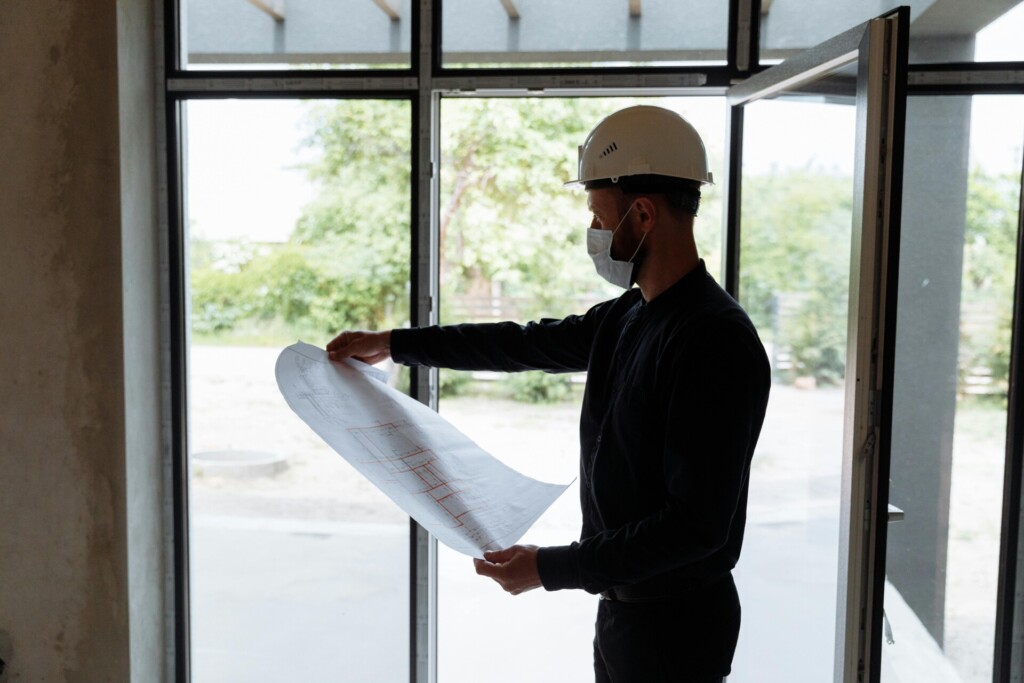
Green construction materials help projects cut carbon, save energy, and support healthy interiors. When we approach each project with sustainable sourcing practices and performance documentation, we build the foundation for long-term building performance improvements. The materials covered in this discussion offer proven pathways to reduce environmental impact while maintaining durability and cost-effectiveness.
Starting small creates the best path forward. Define clear goals for energy efficiency, carbon reduction, and indoor air quality at the project’s outset. Verify data from suppliers about recycled content, certifications, and environmental claims before making selections. Choose locally available options when performance and costs remain comparable. Pilot one or two green construction materials per project rather than attempting wholesale changes. Document installation processes, performance outcomes, and lessons learned to inform future projects. When certifications like LEED or FSC add measurable value, align material selections with those standards.
Consistent use builds institutional knowledge and supply chain relationships. Each project becomes an opportunity for continuous improvement, teaching teams about material performance while reducing waste and enhancing building systems. This approach transforms sustainable sourcing from a one-time decision into a core competency that strengthens with experience.
Partner with EB3 Construction to integrate green materials into your next project.

